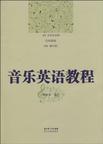音乐英语教程
出版时间:2009-10 出版社:长江文艺出版社 作者:朱爱国 页数:264
Tag标签:无
前言
随着国外作曲技术理论、音乐表演、音乐学、音乐教育等领域新型、先进的技术方法,崭新的研究成果迅速、不断地引进,专业外语作为应用工具以及作为人才培养的一大内容,越来越引起了人们的广泛关注。于是,近二十年来,我国的许多音乐院校、艺术院校的音乐专业都陆续开设了“音乐英语”课。率先开设这门课的有沈阳音乐学院、中央音乐院、上海音乐学院、武汉音乐学院等,普遍取得了较好的教学效果,对音乐专业人才专业外语能力的培养,起到了积极的、实效的作用。 然而,要开设这门专业性很强的课程,就必须要有合适的配套教材。为了补救这门课教材上的空阙,沈阳音乐学院外语教研室于1997年,率先在全国部分音乐院校(西安音乐学院,武汉音乐学院,四川音乐学院,天津音乐学院)组织了一批专家、教师集体编撰了《艺苑英语》。这本书的问世,确实部分地解决了当时开设这门课在教材使用上的燃眉之急。 当然,每一本教材,包括每一种教学体系,都不可能做到尽善尽美、完备无缺。由于这种教材的专业含量要求极高,所以,如何使教材更能体现专业性,针对专业应用上的实效性、教学上的可行性(尤其是教学布局上的循序渐进),并尽可能地拓宽教学视野与教学内容,一直是笔者多年思考的问题,最终将自己常年教授这门课的点滴经验汇集到了本书中。 下面是关于本教材的整体构想与构架: 一、本教材的使用对象 本教材的使用对象为音乐院校、艺术院校音乐专业的大学生和研究生。可作为选修课,或在有条件的学校作为大学公共英语课的后续课程教材。也可以作为业余音乐爱好者学习音乐英语的自学读本。学生学习本教材的起点应该具备基础英语的能力(已掌握基础英语语法、基本英语词汇量、常用英语句型和惯用法以及具备基本的英语读、写能力)。 二、本教程的构成情况 本教程总体由三大部分构成:I、课程主体;Ⅱ、短文阅读;Ⅲ、短文翻译。其中,“课程主体”部分的内容为:1.课文;2.课文注解;3.补充阅读材料;4.英汉翻译基本技巧。“英汉翻译基本技巧”这一内容是拓宽教学视野与教学内容的一项新的尝试。必须解释的是,对这一教学内容,虽然冠名为“翻译技巧”,但实际上,在英语学习的中级阶段,完全可以把“翻译”简单地看作是“理解与表达的思维结果和/或最终的文字记述”。安排这一内容的主要目的,完全是为了训练和提高学生对专业原文文献的理解和一般表达能力。当然,对于某些特殊专业,如音乐学专业的“外国音乐史”、“外国音乐文献编译”等方向的学生,则可将标杆再往上定,也能训练和提高学生真正意义上的口头或文字的翻译能力。
内容概要
本教程总体由三大部分构成:课程主体、短文阅读、短文翻译。本教程主要包括:音乐基本理论、音乐欣赏、现代音乐理论。其中,以“音乐基本理论”为主线,同时伴随英语语言程度的顺阶进行。 本教材的使用对象为音乐院校、艺术院校音乐专业的大学生和研究生。可作为选修课,或在有条件的学校作为大学公共英语课的后续课程教材。也可以作为业余音乐爱好者学习音乐英语的自学读本。学生学习本教材的起点应该具备基础英语的能力。
书籍目录
PART Ⅰ 课程主体 Unit 1 The Chromatic Scale Notation of Chromatic Scales Unit 2 Intervals(Ⅰ)Intervals within an Octave Major,Minor,Augmented and Diminished Intervals Unit 3 Intervals(Ⅱ)Transposition Compound Intervals Unit 4 Triads Chord Notation in Jazz Unit 5 Chords Symbols of Chords Unit 6 Cadences Plagal Cadence Unit 7 Melody Phrase Unit 8 Harmony(Ⅱ) Concords and discords(Ⅰ) Unit 9 Harmony(Ⅱ) Concords and Discords (Ⅱ) Unit 10 Rhythm 20th-Century'S Rhythm Unit 11 Key,Tonality Dynamics Unit 12 Instruments of the Orchestra(Ⅰ) Instruments of the Orchestra(Ⅱ) Unit 13 Non-Harmony Notes(Ⅰ) Suspension: Unit 14 Non-Harmony Notes(Ⅱ) Pedal Point Unit 15 Counterpoint Canon Unit 16 Extensions of the Triad Dominant 9th1lth13th Unit 17 Modulmion Other Ways of Modulation Unit 18 Chromatic Chords(Ⅰ) Altered Chords Unit 19 Chromatic Chords(Ⅱ)The Diminished Seventh The Neapolitan Sixth Unit 20 Chromatic Chords(Ⅲ)The Augmented Sixth Harmonic Sequences 附录一 数字在音乐中的一般用法 附录二 专业术语、人名与曲名的翻译简介 附录三 专业术语、人名与曲名翻译的几个问题PART Ⅱ 短文阅读 1 Motifs 2 Chamber Music 3 Bach'Fugue in C Minor 4 Beethoven'S Symphony No5 5 Ravel'Piano Concerto in G najor 6 Tchaikovsky'Piano Works 7 Rakhmaninov'S Works(Ⅰ) 8 Rakhmaninov'S Works(Ⅱ) 9 Rakhmaninov'S Works(Ⅲ) 10 Ren Guang and Fishermen's SongPART Ⅲ 短文翻译练习 1 Melody and Theme in Voice 2 Before the Tonal Period (Ⅰ) 3 Before the Tonal Period (Ⅱ) 4 Some Modern Development 5 The Twelve-Note Method 6 Charles Ives(I) 7 Charles Ives(II) 8 Twentieth-Century Rhythmic Idioms英汉翻译基本技巧练习参考答案课程主体参考译文短文阅读参考译文短文翻译练习参考译文本书编写主要参考资料音乐专业英汉翻译常用工具书本书音乐英语词汇总表
章节摘录
The Chromatic Scale The scales of all major and minor keys are diatonic scales. In a minor key, boththe harmonic and melodic forms of the scale are diatonic. Notes which do not belong to the key are said to be chromatic. A "chromatic scale" is a scale made up entirely of semitones. That is to say, it includes all the notes (black and white) on the key-board. For about three centuries after 1600, music was generally based on the major and minor scales and not on the chromatic scale. Individual chromatic notes were used, but often merely as special effects ( the word "chromatic" means "colored" ), which had noinfluence upon the key.Sometimes, it is trueE, their use could bring about achange of key, in which case the key signature might be Changed. During the second half of the 19th century and the early part of the 20th, the use of chromatic notes devel-oped to such an extent that any feeling of tonality was often weakened. In the hands ofsome composers, it was finally destroyed altogether ( in music described as "aton-al"), although many others have continued to write tonal music. More will be said a-bout atonal music and its notation, but first it is necessary to consider how the chromaticscale is notated when it is used in music which is basically diatonic. When chromatic scales, or parts of them, occur in real music, composers are oftennot fussy about their notation. Usually they are written in ways which seems conven-lent, bearing in mind the key signature if there is one. In practice this generally means using the minimum number of accidentals needed to do the job, though there can be more than one way of achieving this. Theorists distinguish between two ways of writing the chromatic scale: the harmonic and the melodic. But no one need lose any sleep over them since composers them-selves never have. The harmonic chromatic scale is the same whether ascending or descending,and whether it occurs in a major or in a minor key. In practice this always means that every degree of the scale has to be written twice, except the 5th and, of course, the key-note at the top and bottom.
图书封面
图书标签Tags
无
评论、评分、阅读与下载
用户评论 (总计2条)
- 除了课程以外,还有很多知识的拓展阅读。这本书中的音乐知识比较侧重专业性,适合有一定乐理知识的人阅读和学习。
- 本书对于音乐专业的学生来说有一定难度
